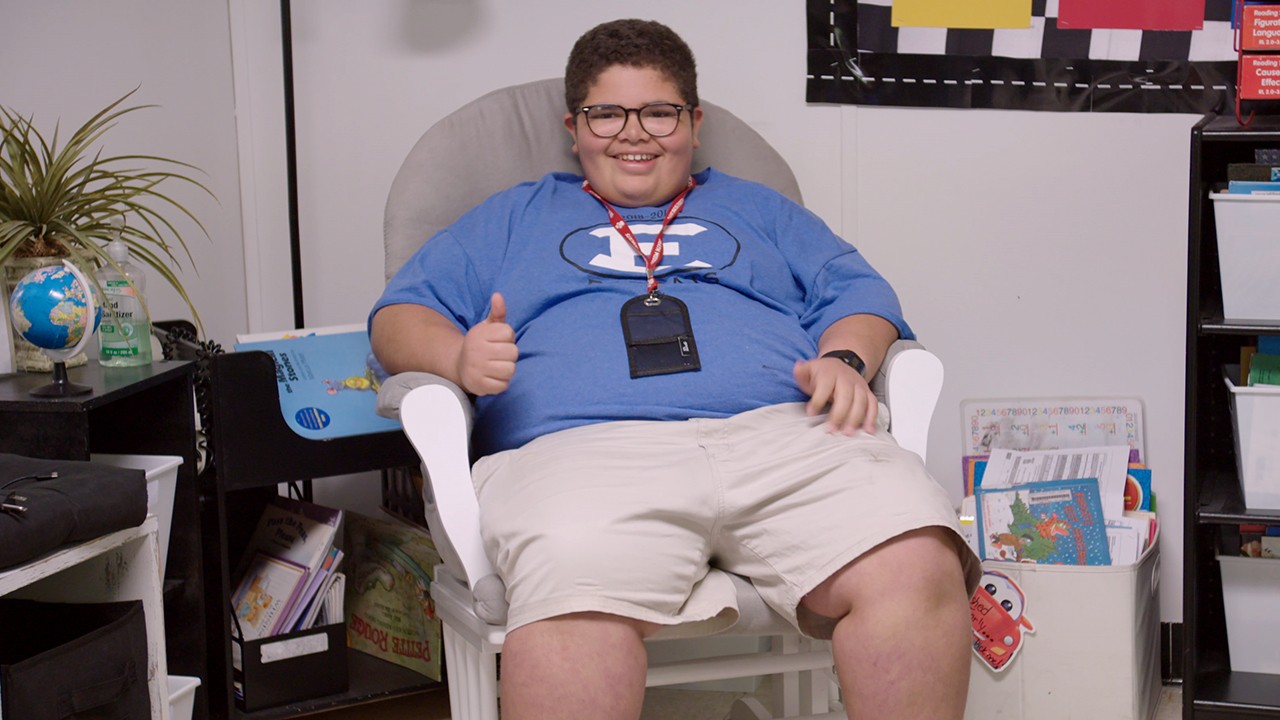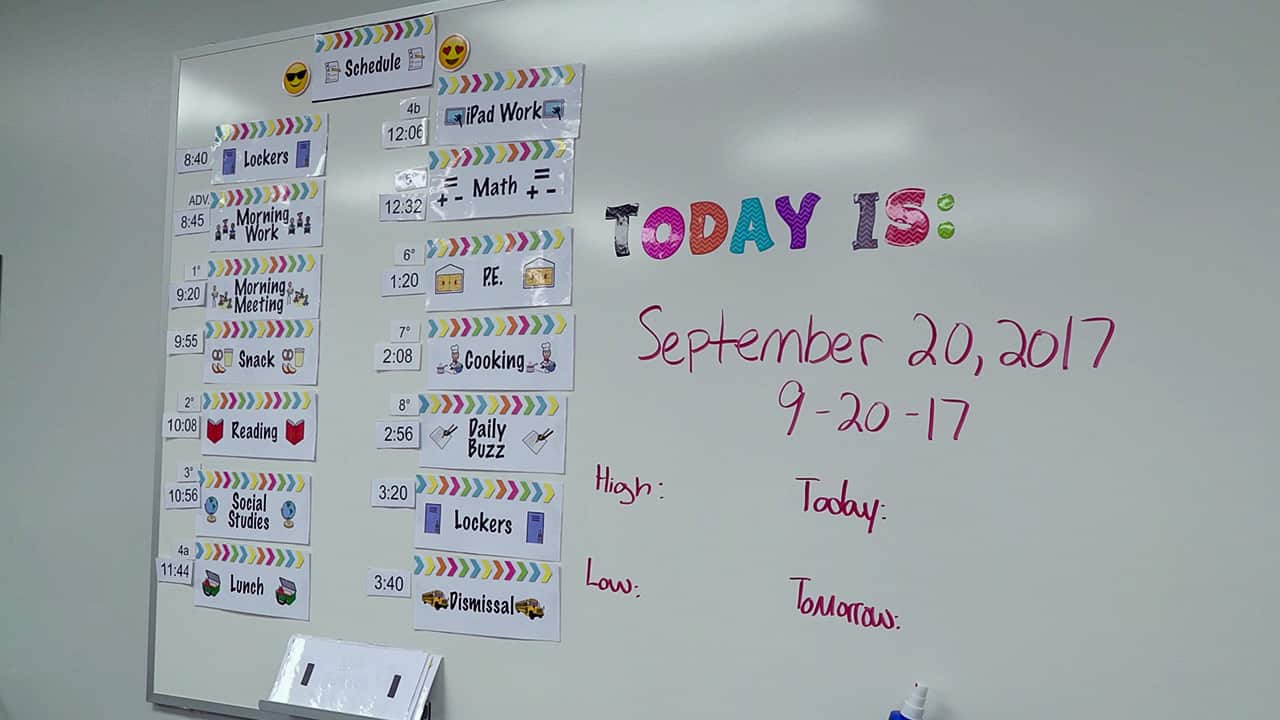- Promoting independent transitions throughout the day
- Helping clarify daily expectations
- Supporting your student’s sequencing of events
- Providing a consistent and meaningful source of information for your student
It is equally important to individualize schedules to meet each student’s unique needs. The visual schedule acts as a receptive communication tool by providing your student with information about their day. Therefore, it is critical that schedules are presented in a way that is meaningful and easily understood by each student.
Create an individualized schedule
Set your student up for success by considering the following elements of a visual schedule. Take into account your student’s strengths and needs as you create a unique and meaningful way to communicate about their day. Keep in mind that a daily schedule communicates where to go in order to facilitate more independent transitions between activities.
Choose a visual cue that is most meaningful to your student
For concrete learners, use objects to communicate each transition (e.g., a plate for a snack or a hat for an outdoor walk). Some students respond well to pictures, line drawings or photographs. While others with developed literacy skills may do best with a written schedule. Using a picture paired with a word or simple phrase may also benefit students with early literacy skills.
Consider the appropriate length of your student’s schedule
Concrete learners using an object-based schedule may need to be presented one object at a time. For students who are developing sequencing skills, a “first____, then____” sequence of objects may be meaningful. If your student is easily overwhelmed by too much information, consider showing a sequence of just a few activities at a time. On the other hand, many students are motivated by knowing the entire sequence of their day, especially knowing when they will go home. These students typically do best with a full-day schedule.
Each student must interact with the schedule in a meaningful way
This ensures that the student is attending to each cue, following the correct sequence and visually indicating their progress throughout the day. Students can interact with the schedule in a variety of ways. A visual cue (the object or picture card from the schedule) may serve as a transition cue as your student selects it from the schedule and carries it to the designated location. Matching the cue to a picture in the desired location is helpful for students with strong matching skills. Alternatively, your student may simply flip the picture card over or place it in a “finished” pocket. Students using a written schedule can indicate their progress by crossing out, checking off or highlighting items as they are completed.
Teach your student a routine for checking their schedule
How will your student know it is time to check their schedule? A visual cue may provide this information. For example, use a “check schedule” card, a designated pen or pencil or a picture of a high-interest item for your student to match to their schedule. Pairing a verbal reminder with a visual cue is a useful way to teach this routine.
Other considerations
Keep in mind that using a schedule is a skill and therefore needs to be taught. Don’t assume that your student will automatically understand the routine for using the schedule without your guidance. Make concrete connections between objects or picture cards and the activities they represent. Pairing the visual cue with a simple verbal label may be useful at first. For some concrete learners, providing a model, a gesture or a simple physical prompt may be helpful ways of teaching the meaning of a visual cue. By selecting the visual cue that best matches your student’s learning level, you can increase your student’s likelihood of success.
While you do want your student to learn a routine for using the schedule, you should avoid having your student memorize the schedule. Be sure to vary the type and the sequence of events in your student’s day when possible. In doing so, you can ensure that your student is attending to the information on the schedule rather than relying on a memorized routine or order to the day. This becomes especially important when unexpected changes to the day’s events occur or when you need to present a new item on the schedule. By not having a rigid routine to the day, your student can remain more flexible and successfully navigate their day with the help of the visual schedule.


